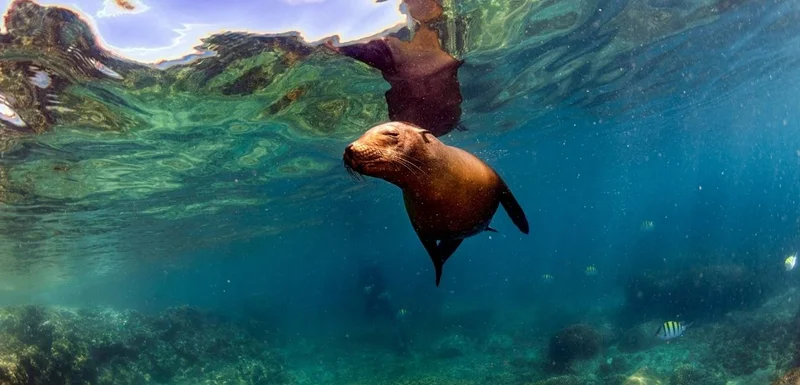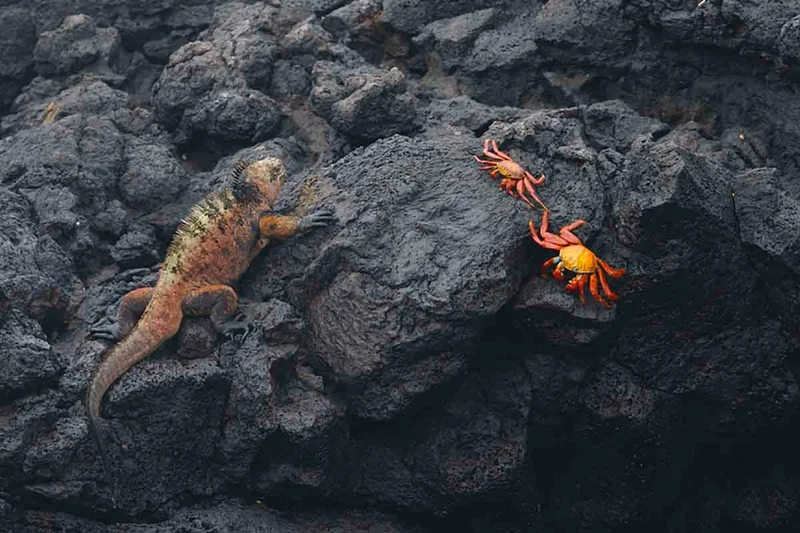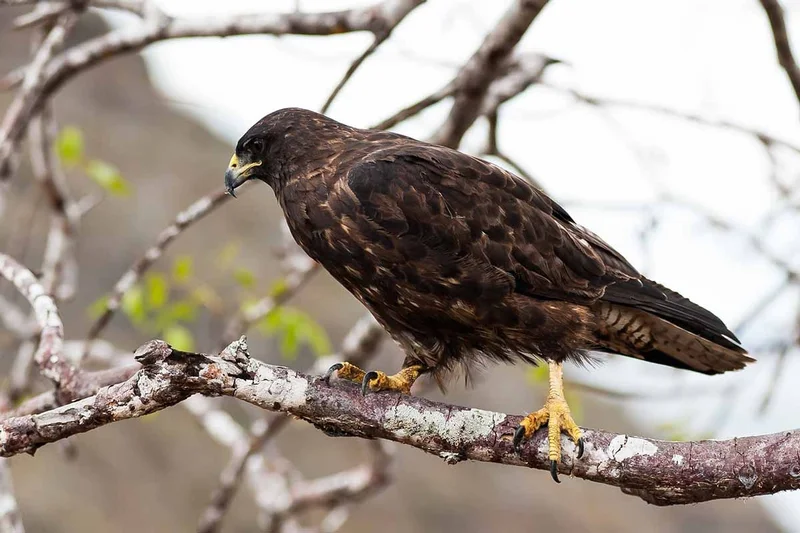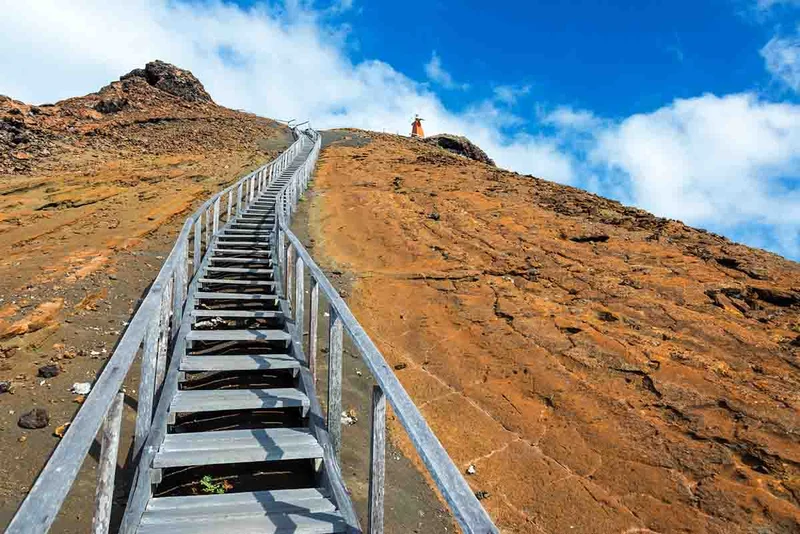
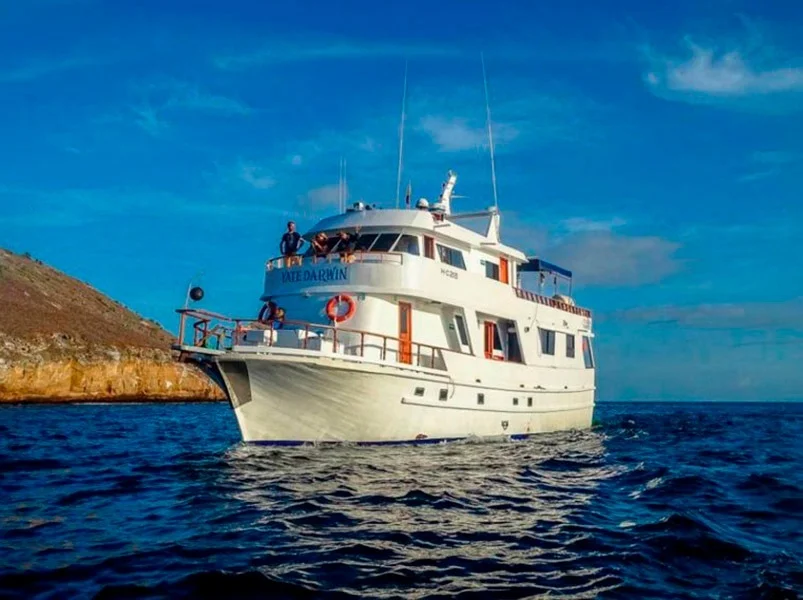
8 Day Galapagos Itinerary
Day 1: Baltra Island & Mosquera Islet
Baltra Airport, travelers pass through an airport inspection point to make sure that no foreign plants or animals are introduced to the islands, as well as to pay the park entrance fee ($100), Our guide will meet with you, will help you pick up your luggage, and accompany you to the port of Seymour in a short bus ride, where we set the cruise aboard the Yacht Darwin where the captain and crew will welcome you.
Mosquera Islet
Mosquera is a reef of rocks and coral (the result of an uprising) and a great white sand beach. Its narrowest width reaches about 160 meters and has an estimated length of 600 meters. This island has one of the largest populations of sea lions. You can also observe several species of shorebirds. There have been occasional reports at this site of Orcas (Orcinus orca) feeding on sea lions.
Day 2: South Plaza Island & Santa Fe Island
South Plaza Island
The visitors’ site of Plaza Sur Island is located east of Santa Cruz Island and forms part of two islands known as Islas Plazas. The landing is on the north coast of the island in a channel that separates it from Plaza Norte Island. Plaza Sur has an area of 13 hectares and a height of 25m. The succulent plant, Sesuvium edmonstonei and Portulaca oleracea, are common in Plaza Sur, the second is the favorite food of the land iguanas. On the cliffs located in the south – east of the island, there is a group of lone sea lions, mixed juvenile and adult old and retired. Land iguanas on Plaza Sur, are smaller than those of other sites.
They nest during the hot season. Throughout the island are several hybrid iguanas, a result of crossing a male marine iguana and a female land iguana. These iguanas are unique, recognizable at first glance by their black or gray color, with a land iguana’s crest, but face and tail of the marine iguana. During consecutive dry years, the iguana population may decrease due to lack of food and water. Allowed tour: Group tour with a naturalist guide; guided walks.
Santa Fe Island
The visitor site Santa Fe, is located on the northeast part of the island bearing the same name. Of the two species of land iguanas present in Galapagos, the Conolophus subcristatus inhabits Plaza Sur, Santa Cruz, North Seymour/Baltra, Isabela and Fernandina, while the Conolophus pallidus species only lives in Santa Fe. It is distinguished mainly by the larger and paler color (hence its scientific name). Studies according to Geist D.J, suggest that Santa Fe could be the oldest Galapagos volcano, there are sub-aerial rocks dating back 3.9 million years. He also mentions that the island of Santa Fe has a mix of underwater lava pushed to the surface by uprising and lava that were deposited subsequently to the uprising. Another added attraction is the presence of giant tunas that have a trunk wider than in any other island.
Day 3: Española Island: Gardner Bay, Islote Gardener, Islote Osborn & Punta Suarez
Gardner Bay
Gardner Bay is located on the north coast of Española Island. The visiting area is defined by two beaches the width a total length of 1300 meters.
The main attraction is the colony of sea lions (Zalophus wollebaeki), which inhabit the beach in great quantity during the breeding season. Here there are three species of Darwin’s finches: A subspecies (Geospiza fuliginosa) of the Large Cactus Finch, which is similar to the large ground finch, the Small Ground Finch (Geospiza fuliginosa) and the Wabler Finch (Certhidea Olivacea) which is another endemic subspecies. Both resident and migratory birds are observed. This is an important nesting area for sea turtles (Chelonia mydas).
Punta Suarez
Punta Suarez is located west of the Española Island. The trail is about 1670 meters. The approximate travel time is 2 hours. Española is known as one of the older islands, with an estimated age of 3.3 million years. Basaltic lava rocks cover much of the island. The albatross (Diomedea irrorata) is endemic in Española Island, but has also been reported in the Isla de la Plata (Machalilla National Park). Albatrosses could be in Española from April to November or December. Española has a high percentage of endemism because it is isolated from other islands; this is because the species in this island have no gene flow with species from other islands. Marine iguanas have a turquoise color with red in the breeding season. A variety of mockingbird, lava lizards, Darwin’s finches are considered endemic to this island. The mockingbird of Española is the largest species in the islands and developed carnivorous behavior. They feed on eggs of seabirds, sea lion placenta and newborn tortoises. The lava lizards are the largest of the 7 species endemic to the Galapagos.
Day 4: Floreana Island: Post Office Bay & Punta Cormorant
Post Office Bay
Post Office or Post Office Bay is a historic site that recalls the days of the whalers, when they came for supplies of Galapagos tortoises and water. Presumably a whaling boat captain placed a barrel in the eighteenth century for those who pass through the bay to leave mail and deliver those with the same destination. In history it appeared for the first time on a map of the whaler James Colnett in 1793. Today, this tradition is alive with tourists visiting the Galapagos. They do not need stamps. All they have to do is pick up a letter that is directed to where they live. Another point of interest is a lava tunnel, which is formed when lava cools on the sides and base, but the core material continues to flow downward. Eventually, the still liquid lava leaks and spills outward and leaves a hollow cavity. Allowed tour: group tour with a naturalist guide; guided walks.
Punta Cormorant
The visitor site Punta Cormorant is located on the north coast of Floreana Island. The trail has an approximate distance of 720 meters; the same goes for a lagoon, views and a fine sand beach. In the lagoon one person can find a large population of flamingos (Phoenicopterus ruber) and on the beach, a nesting area for sea turtles (Chelonia mydas). Also you can see other species of flora and fauna. At Punta Cormorant there are two plant species endemic to the place: Scalesia vellosa and Lecocarpus pinaffitidus. The beach landing contains a large amount of olivine crystals, giving it a greenish color. These crystals have been expelled from the wind of nearby tuff cones. The glass was formed when the magma was still underground. It contains magnesium, iron and silica. There is a beach composed of polished Hermatypic coral sand, the reason for having its smooth texture. These types of areas are ideal for stingrays, which prefer places with surf that has fine sand, which allows them to escape from natural predators
Day 5: Santa Cruz Island: Charles Darwin Station & Twins Craters
Charles Darwin Station
The tour starts at the information booth of the GNP, then continues to the Van Straelen interpretation Center, then to the breeding center and from there begins an elevated circular path made of wood, where you can see tortoises of Española Island and end in the tortoise exhibit corral. Tortoises of this corral are accustomed to human presence; it is an excellent spot for visitors to take photographs with them. Always remind your visitors not to touch them and not to step on the platform where is placed their food. The path continues to the CDRS facilities and then to the town of Puerto Ayora. Allowed tour: group tour with a naturalist guide; guided walks.
Twin Craters
Twin Craters or The Pit Craters are, geologically speaking, seen as craters and its formation is not directly due to volcanic action. They were created as a result of the collapse or sinking of surface materials into cracks or manholes. In 1989 a circular path around the largest crater was opened, which passes through the interior of the Scalesia forest, an excellent place to observe land birds, especially the woodpecker finch and the vermillion flycatcher. The vermillion flycatcher is the most outstanding terrestrial bird in the upper parts of most of the islands. The Pit Craters is perhaps the best place for observing them, since they arrive in large numbers in the Scalesia forest. They are curious and usually fairly tame. They feed on insects they often trap with their peak in mid-flight. Their nesting season is from January to April; they put 3 eggs in a nest constructed of moss and lichen. The vermillion flycatcher inhabits many areas of North and South America. Another plant that draws attention at the Pit Craters is the Galapagos Guava or guayabillo tree, Psidium galapageium, which have a clean and smooth bark. Its branches are covered with epiphytes and brown liverworts, Bryopteris liebmanniana that many people confuse with moss.
Day 6: Santiago Island: Port Egas & Playa Espumilla
Port Egas
The visitor site Port Egas is a black sand beach located on the west side of James Bay and northwest of Santiago Island. South of the beach is Sugarloaf Volcano, which has deposits of volcanic tuff, the same that has favored the formation of the black sand beach. The Crater is just north of this site; it has a saltwater lagoon, which during the summer dry season becomes a salt mine.
Espumill Beach
The Espumilla visitor site is on the northern coast of Santiago Island in James Bay. The main attractions here are a palo santo forest, beach and the landscape. The beach is an important site for nesting marine turtles (Chelonia midas agassizi).
Day 7: Bartolome Island & Santiago Island: Sullivan Bay
Bartolome Island
The Bartolomé visitor site, is a flagship site in the Galapagos Islands because of its wonderful beauty. It possesses masterful landscapes and its main attractions are the beaches, the dunes and Pinnacle Rock. Among the local species, there is the sea turtle (Chelonia mydas), which choose this place as a nesting site and the Galapagos penguin. This site has two beaches: North Beach and South Beach. The north beach is the landing site where you can practice swimming and snorkeling. South beach is accessed by a small path along the mangroves and over the great sand dune. Bartolome Escalera, The top of this hill is about 115m and the route is performed on a path of 795 meters. No one knows the exact age of this island but according to its geological composition and general characteristics it is quite young. The few plants found on the island are called pioneers because they are the first plants that arrive and settle there. E.g. Tiquilia nesiotes, Tiquilia fusca and Chamaesyce spp. East of the summit there are spatter cones, consisting of thick lava droplets. To the west lie tuff cones (volcanic ash sediment) and their eroded remnants. The Tower or Pinnacle is part of a tuff cone. A small colony of penguins, Spheniscus mendiculus, breeds in the small bay. Bartolomé is one of the best places to see them.
Santiago Island: Sullivan Bay
Sullivan Bay is of great geological interest. It is located southeast of Santiago Island; the landing can be performed either in the rocky shore (dry landing) or the white sand beach (wet landing). The length of the trail is approximately 1.5 km; travel time is one hour and a half. The area is covered by Pahoehoe lava flows (solidified lava in corrugated or accordion form). It was very active in the last 25 years of the nineteenth century. The Sullivan lava was formed in 1897. Geologically this flow is very young. The formed magma is flat but the movement of underground lava, the rapid cooling and other eruptions led to the break in many places. These formations have a thickness of 1.5 m and did not cover much of the previous relief forming “kipukas” (Islands of vegetation surrounded by newer lava tides).
Day 8: North Seymour – Transfer out
North Seymour is located north of Baltra (or South Seymour). The total distance of the trail is 2 miles. Seymour North, Plaza Sur and Plaza Norte,Baltra, northeastern Santa Cruz, Santa Fe and part of Española, were formed by uprisings of underwater volcanic lavas. They were part of a volcanic lava table deposited in sheet form along cracks located on the ocean floor. The uprisings occurred sporadically and lasted more than a million years to reach its current level. The vegetation is bush and hosts the largest nesting colony of Great Frigatebirds in Galapagos. Importantly, the Galapagos is the westernmost distribution for this species. The common frigate is also present.
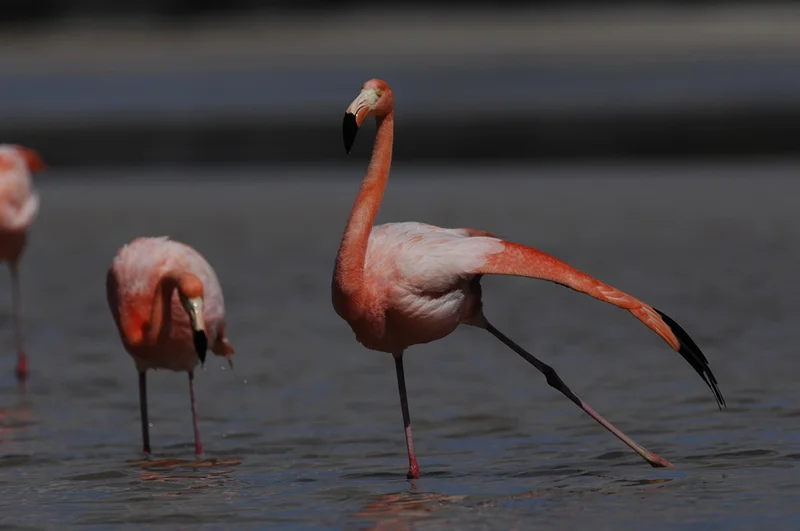
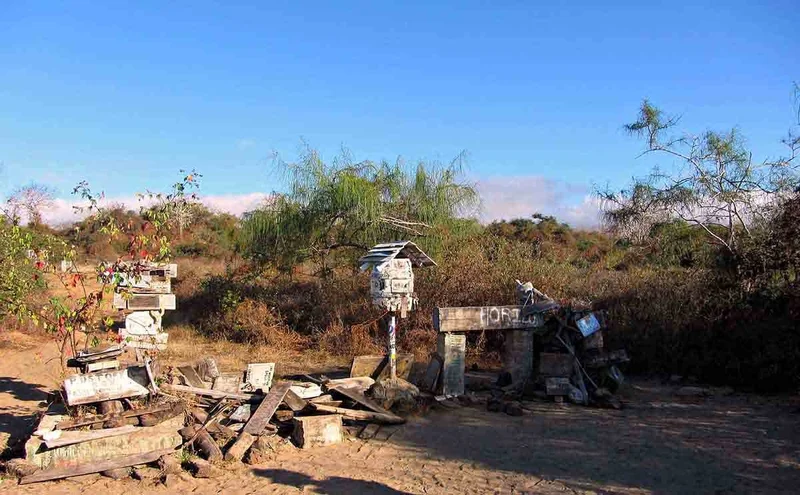
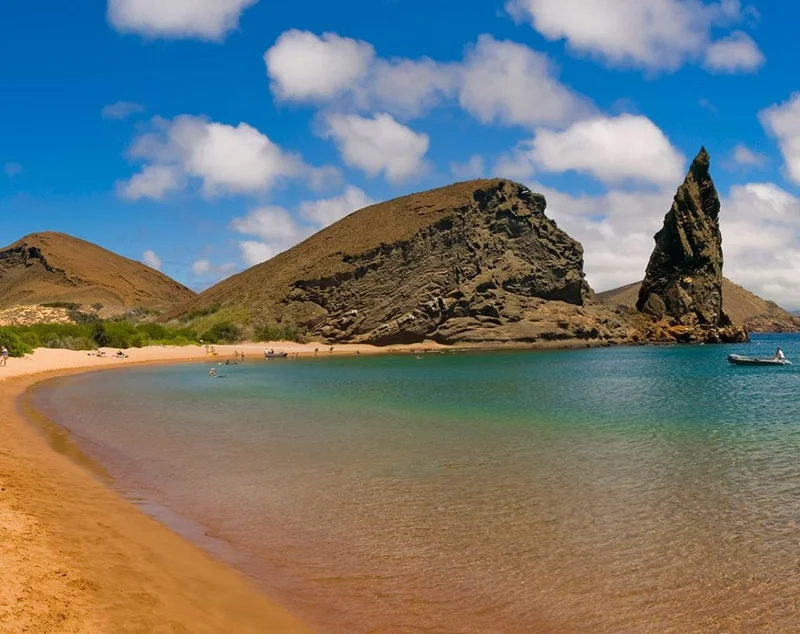
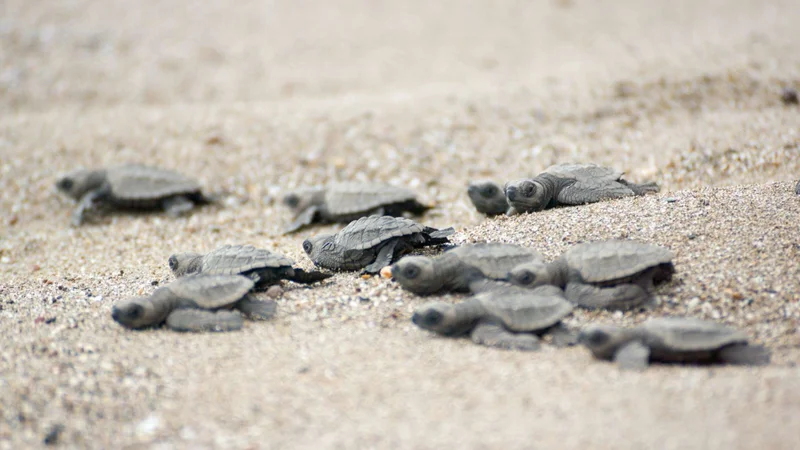
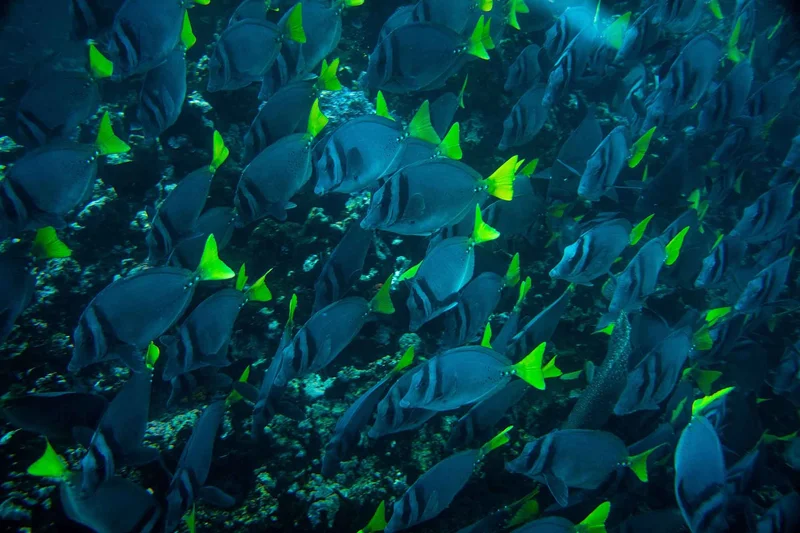
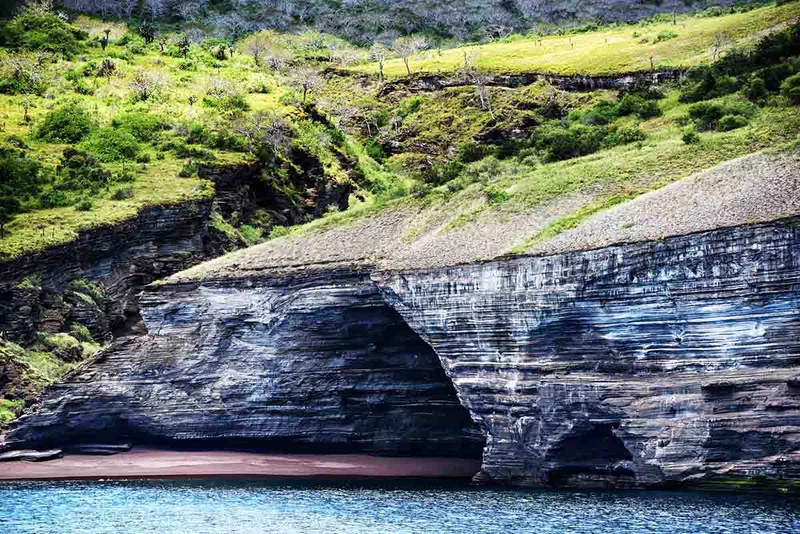
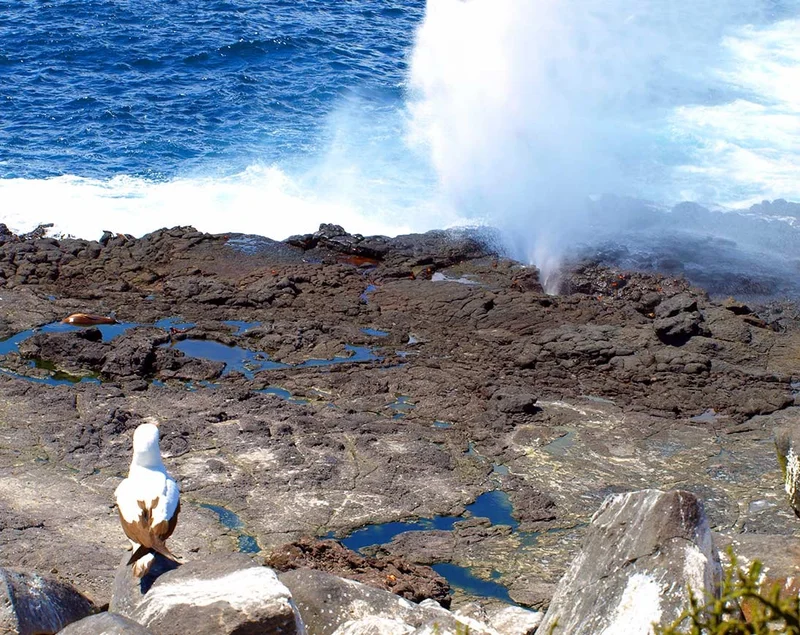
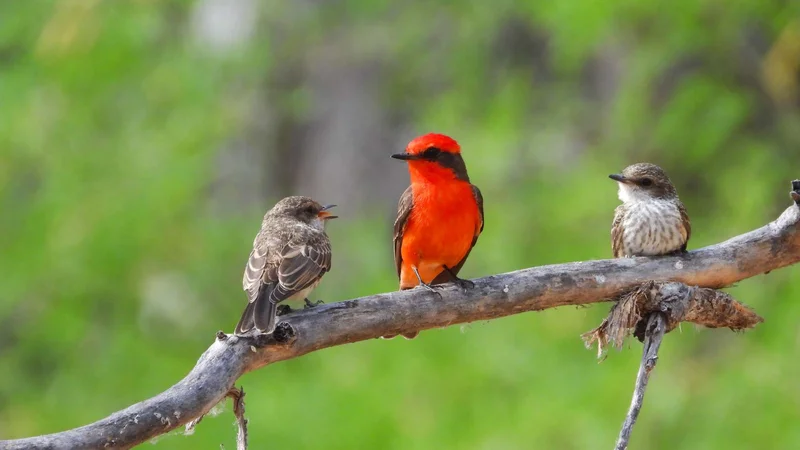
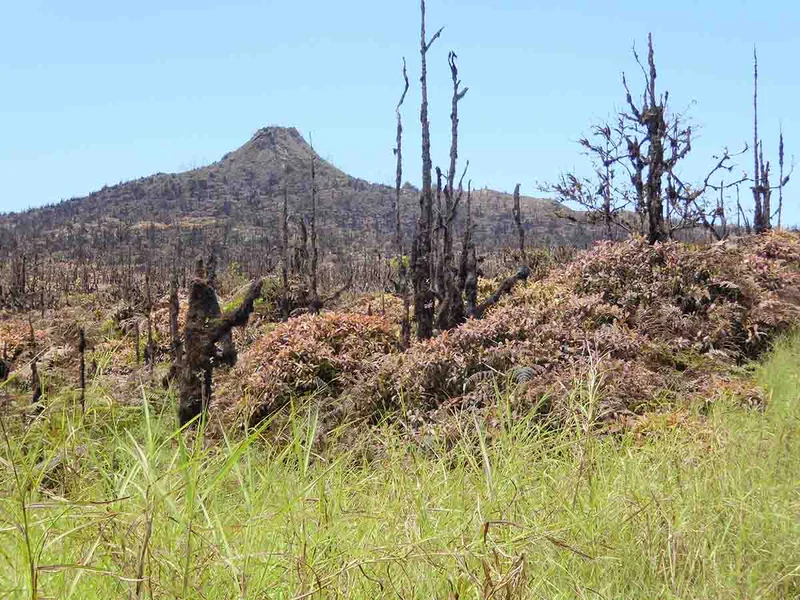
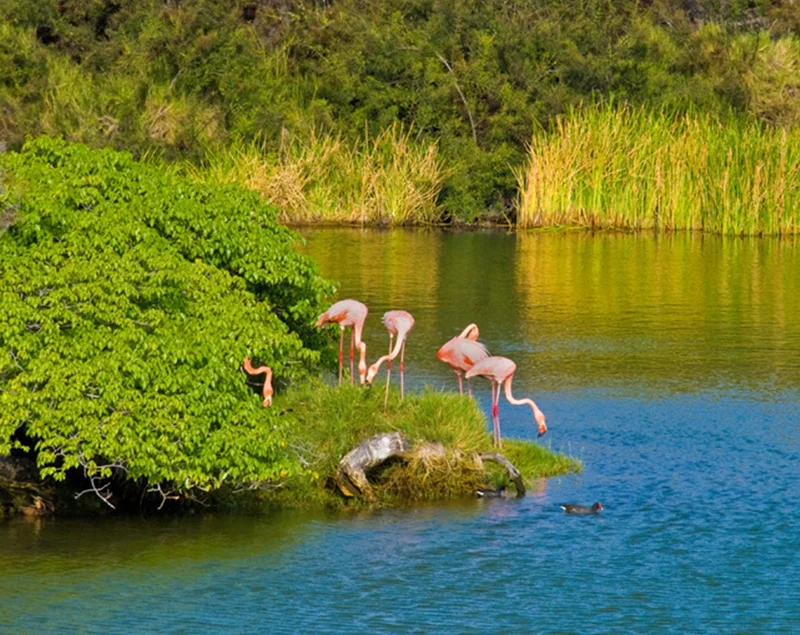
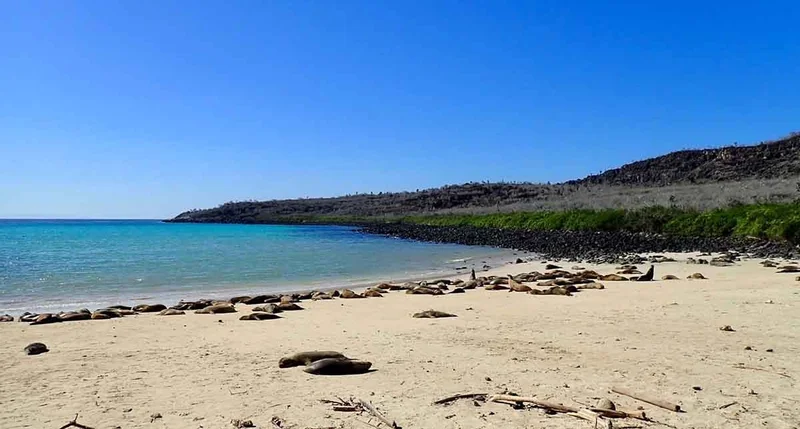
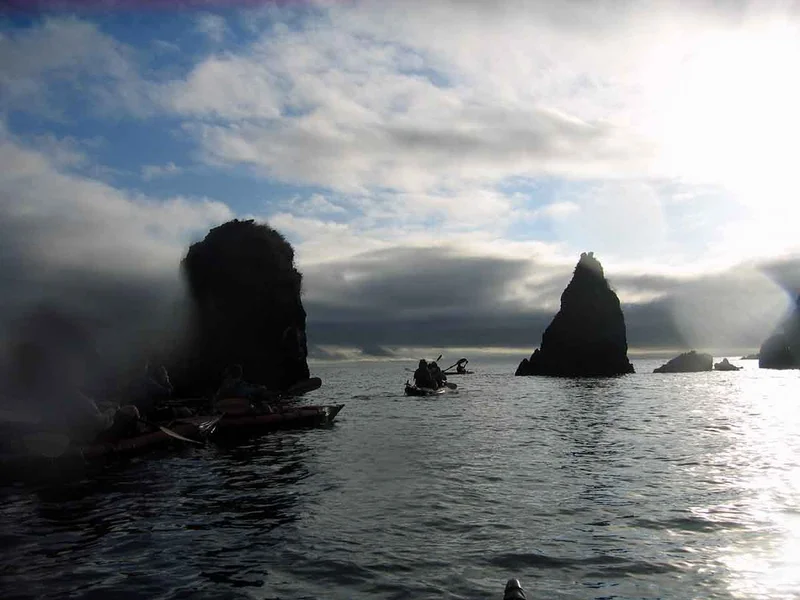
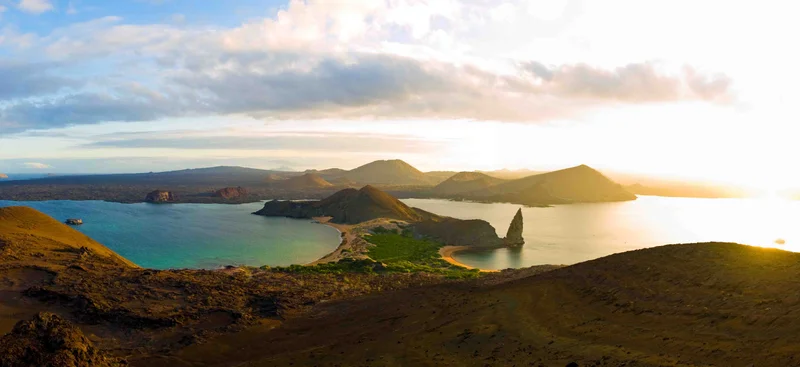
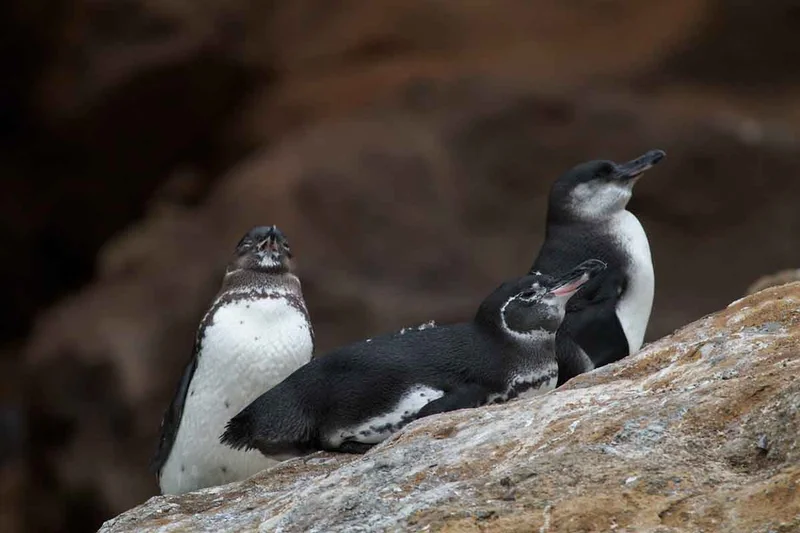
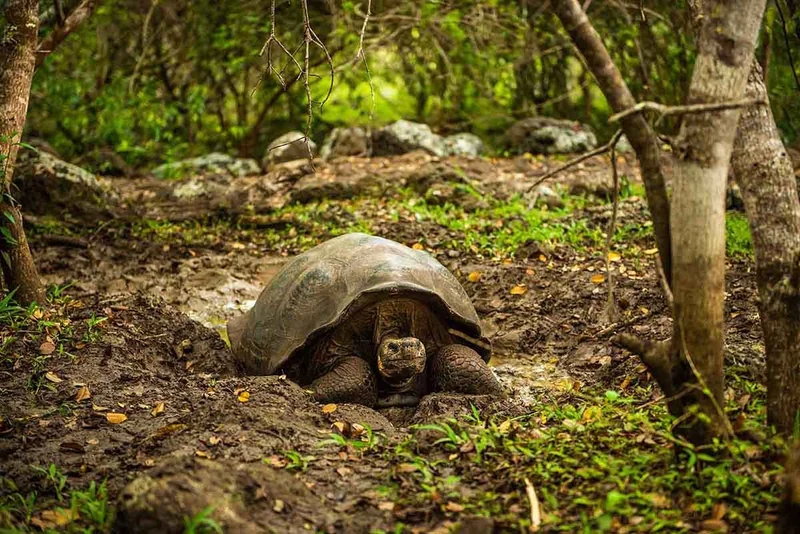
8 Day Galapagos Itinerary Includes
- Accommodation in double/twin bunk-bed cabins with private facilities
- All meals during cruise, drinking water, coffee & tea
- All excursions accompanied by bilingual licensed guide as per itinerary
- Cruise Fuel Surcharge
- Transfers within the islands on cruise dates as per itinerary
- Personalized 24/7 assistance during tour.
8 Day Galapagos Itinerary Does not Include
- Galapagos National Park Entrance Fee US$200 per person (in cash only on Islands)
- Galapagos Migration Card US$20 in cash per person (at Mainland’s Airport)
- Alcoholic / soft drinks, personal expenses, extras, tips and other services not specified in the program
- Bus ride from Baltra airport to Itabaca Channel: $5 per way per person in cash
- Snorkeling equipment and all sizes wet-suits for rent on board (in cash)
- Travel, medical & cancelation Insurance and any services on Mainland
- Flights to Galapagos from Quito / Guayaquil
- International flights to/from Ecuador.
Itinerary Map
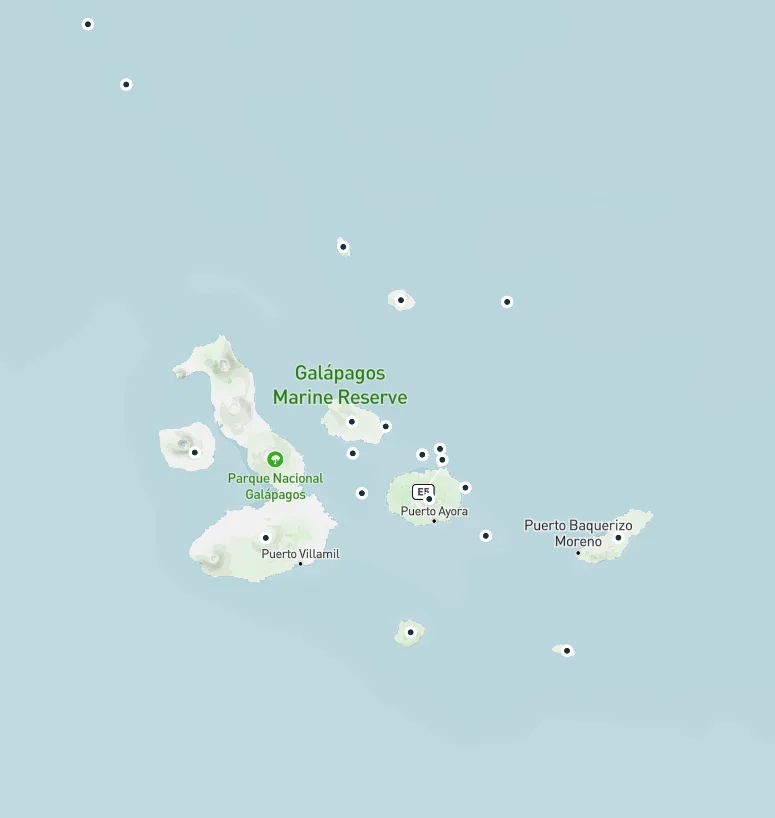
Reviews
Animals you might see on this itinerary:
More information about the Galapagos Islands you visit in this 8 day itinerary:
Adventure cruise in the South and Central Galapagos Islands 8 days - Darwin Yacht
Why travel with us?
Similar Itineraries
